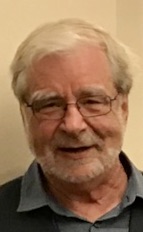Our Shared, but Not Common Humanity
- Marvin T. Brown

- Oct 10, 2023
- 2 min read
Updated: Jan 9, 2024

Central to the development of a climate of Justice is the discernment that we are all equal in different ways. In a sense, only when we see each other as other—as different—can we treat each other equally. More complicated than one might expect. The long history of one group claiming superiority over another group is a history of domination of the more powerful over the less powerful. Because of this history, as an African American women told me years ago, we do not have a “common humanity,” but rather a “shared humanity.”
At the time, I thought I had some idea of what she meant, but the meaning gained more significance when I recently visited the exhibit at the De Young Museum of Kehinde Wiley’s An Archeology of Silence. As Claudia Schmuckli writes in the exhibit’s accompanying book, “the people in An Archeology of Silence force viewers to reckon with their humanity.”
It forces each of us to reckon with our humanity because as Kehinde Wiley says of his work: “Art gives me the power to imagine a set of alternative realities.” These “alternative realities,” I think, represent alternative ways of being human.
There are many things to say about Wiley’s paintings and sculptures, including that they are detailed and specific. “Humanity” is not an idea here. It is embodied in Black bodies in pain, in grief, and at rest. Durig my visit, my humanity was embodied in my white body in the darkened rooms of Wiley’s art.
My white body does not share the pain, the grief, nor the rest with the people in An Archaeology of Silence. I do recognize that I am in the presence of truth: a truth about domination, violence, and death. There is an inhumanity is the room that is not in the paintings or sculptures: the inhumanity of white terrorism, lynchings, and murder.
As I have reflected on my visit to the museum, I think that Wiley has magnificently presented the humanity of the lived experience of Black people as an “alternative reality.” Most white people, including me, have little in common with these human experiences. Still, white visitors can share in the sadness, grief, and beauty that his art represents, and in so doing, share a humanity that does not deny our differences.

Perceptive. And well stated. Thanks!